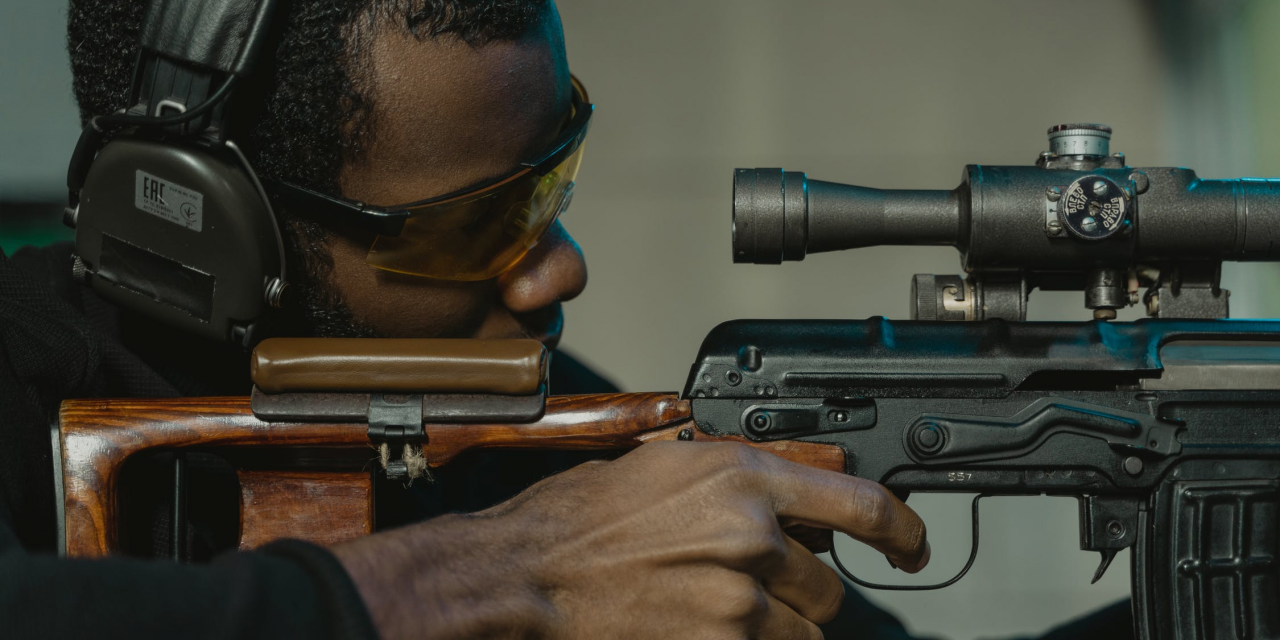Trips to the gun range can be fun, but after a while of shooting small caliber pistols at short distances, you get better at it, but you could also get a bit bored. That’s when ideas of trying out long-range rifles come into mind – and with good reason.
Long-range shooting is much more complicated, and therefore, the feeling when you get your first bullseye from a greater distance, the feeling is overwhelming. If you want to try it out, ask around your range, and maybe check this website. We’ve also put together this beginner’s guide, which should tell you what you need and what to expect.
What Is Considered Long Range Shooting?
To get the basics down first, how far away do you need to be from your target for your shots to be considered long-range? The answer is between 300-1200 yards. Below 300, it’s regarded as short-range, and above 1200 it’s ELD or Extremely Long Distance.
Even if you have aspirations to get to ELD at one point, it’s recommended to start with baby steps and work your way up once you are confident you can make the shot. A lot of practice will be necessary, so be patient and don’t give up; experience is needed as much as a technique with these kinds of shots.
What Kind of Equipment Do You Need?
To get started with long-range shooting, you’ll first need some equipment. Of course, you’ll be needing a quality rifle, but that’s just the beginning. You’ll also need some optics, and you can read below what kind of optics will serve you best.
It can be a significant initial investment just to get started, but if you pick the right equipment and take good care of it, it will last you a very long time. As for tracking the wind speeds, some tools are made just for that you can look into, but you can get yourself a smartphone app that will do a decent job in the beginning.
Optics
There’s no beating around the bush, and you’ll be needing a quality scope if you want to pursue long-distance shooting a bit more seriously. Your standard hunting scopes are great for what they’re made for, but there’s a lot of guesstimation and eyeballing involved with those.
What you need is a professional piece of equipment that will have high-quality lenses, and you need to be able to adjust it according to the distance and the conditions you’re shooting in. That means you’ll need something with BDC (Bullet Drop Compensation), whose purpose is to compensate for wind conditions and the gravitational pull on the bullet.
Where Can You Practice?
Finding a place to practice long-range shooting can be a task and a half, as most gun ranges don’t offer anything longer than 100-200 yards. Certain open-air gun ranges offer long-distance shooting conditions, but they are not as common, and you might need to do some digging to find one in your area.
Even those can be preoccupied, and you might need to wait for an available spot to come and practice. If that’s not an option, you can always search for opportunities to shoot with the Bureau of Land Management (BLM), which might provide some useful information at the very least.
How to Get Better?
So, to sum it up, if you want to get better at long-distance shooting, you’re going to need to practice and learn – a lot. It’s not something you can do simply by feeling, there’s a lot more involved in the process, and you will need to learn how to use your equipment, how to take care of it, and how to set it up.
You can, of course, find instructions on all of that online, but if you can get any advice from someone who’s been shooting from far away for a long time, don’t hesitate to ask, as their personal tips and tricks might be what you need to ring that steel from a 1000 yards away.
Know your rifle, know how to use your additional equipment and your scope, and practice any time you get an opportunity.
In Conclusion
With this guide, you should be able to get started on your path to becoming a long-range shooter, and hopefully, you got enough info to start looking for your first rifle, optics, and other equipment. Just remember to be patient and persistent, and you will be making those 1000 yard shots sooner than you’d expect.











